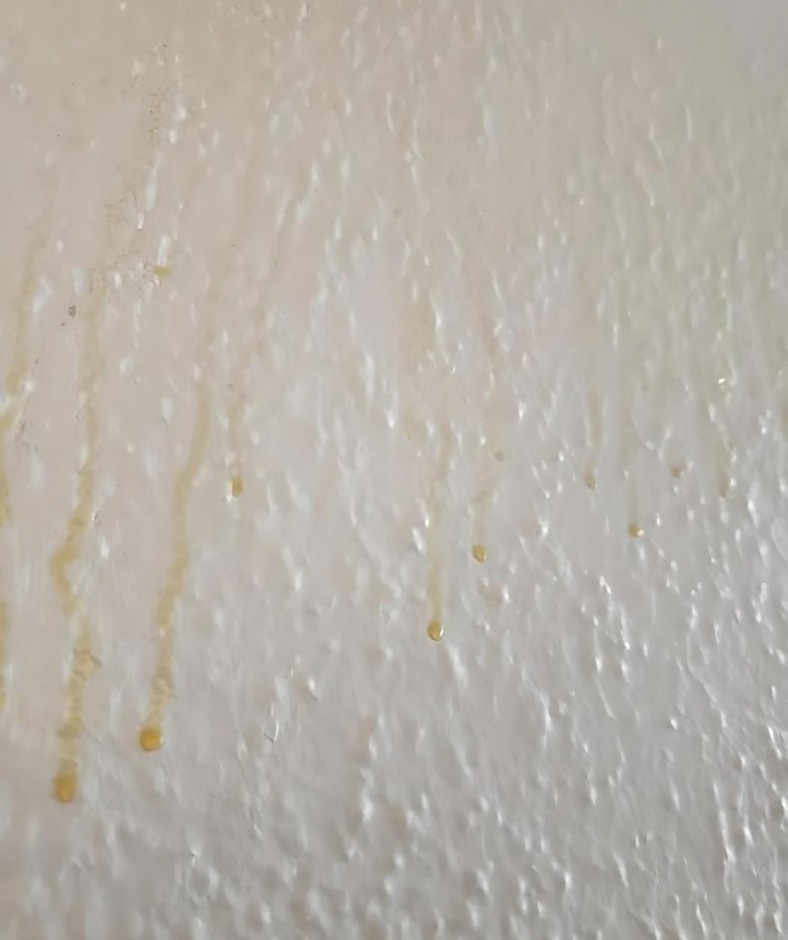Seeing yellow drips on your bathroom walls can be pretty unsettling. Bathrooms are supposed to be clean and fresh, so discovering yellow stains is understandably frustrating. If you’re scratching your head wondering, “What’s causing this?”—don’t worry; you’re not alone. Here, we’ll break down the possible reasons behind those yellow drips and what steps you can take to fix them.

Mold: A Likely Culprit and Why It’s a Problem
Mold is a frequent bathroom problem, but it’s more than just a cosmetic nuisance. Mold is a fungus that thrives in damp environments, and bathrooms often offer the perfect setting. When mold spores land on moist surfaces, they quickly multiply. While some people assume mold is harmless, certain types can actually pose health risks, triggering allergies, respiratory issues, and even chronic illnesses in severe cases. Addressing it sooner rather than later is essential for a healthy home.
The yellowish stains you’re noticing could very well be mold, especially if there’s a musty smell or if you feel your allergies acting up in the bathroom. Mold loves warm, humid spaces—does that sound like your bathroom? High humidity from frequent showers makes bathrooms ideal for mold growth.
Why Mold Grows in Bathrooms
In bathrooms, mold growth isn’t a question of “if” but “when,” due to constant moisture exposure. After a hot shower, steam rises, clinging to walls, ceilings, and even tiles. Without proper ventilation, that moisture lingers, creating an ideal breeding ground for mold. Mold often hides in corners, behind toilets, under sinks, or around windows, and it can appear as yellow, green, or even black streaks. If you’re seeing yellow stains, it’s possible that mold has already started settling in.
Other Possible Causes of Yellow Drips
While mold is a primary suspect, it’s not the only reason yellow drips could appear. Here are some other possibilities:
- Nicotine Stains
If a previous occupant of your home was a smoker, nicotine residue might be the reason. Over time, nicotine can seep through paint, especially in high-moisture areas like bathrooms. Even if you’ve repainted, nicotine stains can resurface, leaving those yellow streaks. - Soap Scum and Hard Water Deposits
Soap scum, mixed with hard water minerals, can also leave a yellow residue on walls. Hard water, rich in minerals, tends to build up on surfaces over time. When mixed with soap, it can create a yellowish film that resembles drips. - Yellow Mold or Mildew
Mold isn’t always black; it can also appear yellow. Yellow mold can grow, especially when mixed with moisture or soap scum, and it can be just as harmful as darker types of mold, so it’s best to handle it promptly.
Preventing Mold and Yellow Stains in Your Bathroom
Taking preventive measures is the best way to avoid mold and other yellow stains in the bathroom. Here’s how you can keep your bathroom looking fresh and clean:
- Ventilate Properly
Good ventilation is essential for reducing moisture buildup. Open windows, turn on exhaust fans, or leave the bathroom door slightly open after showers to help circulate air and reduce humidity. - Wipe Down Surfaces
After showering, take a few seconds to wipe down walls, mirrors, and any other surfaces where moisture tends to gather. This small habit can significantly reduce the chance of mold growth. - Use Mold-Resistant Paint
If you’re renovating or repainting your bathroom, consider using mold-resistant paint. This paint type is specially formulated to prevent mold from clinging to surfaces and helps keep your walls looking new. - Clean Regularly
Regular cleaning, especially in areas like the shower and bathtub, is essential. Use a cleaner designed for bathroom mold prevention to keep surfaces free of buildup.
Removing Mold from Your Bathroom Walls
Already have mold on your bathroom walls? Don’t worry—here’s how to clean it safely and effectively:
- Try a Bleach Solution
For tiles or non-porous surfaces, a bleach solution can work wonders. Mix one cup of bleach with a gallon of water and scrub the affected areas. Just be cautious with ventilation when using bleach. - Consider Natural Alternatives
If bleach feels too harsh, try natural options like vinegar or hydrogen peroxide. These natural cleaners can fight mold effectively without the strong chemical smell. - Wear Protective Gear
Always wear gloves and a mask when cleaning mold to avoid inhaling spores or exposing your skin to cleaning agents. - Call in a Professional If Needed
If mold has deeply settled into your walls or spread beyond your reach, consider calling a professional mold removal service. Professionals have the right tools and experience to remove mold safely and thoroughly.
Conclusion: Don’t Ignore Yellow Drips
Yellow drips on your bathroom walls are a sign that something needs attention. Whether caused by mold, nicotine, soap scum, or hard water, getting to the root of the problem early can prevent it from worsening. Regular cleaning, proper ventilation, and timely action are the keys to a mold-free bathroom. If you notice yellow stains, act fast, and if needed, don’t hesitate to seek professional help.
By staying proactive, you can keep your bathroom a clean, safe, and welcoming space—free from any unwanted yellow streaks





